
Simple Future Tense Rules and Examples 7 E S L
Introduction . While the English language has past and present tenses, it does not have a future tense. To say what will happen in the future, you can use the modal auxiliary will (plus the base form of the main verb), the verb phrase be going to (plus the base form of the main verb, the present simple or the present progressive, but be careful.There are times when one is preferred over the.
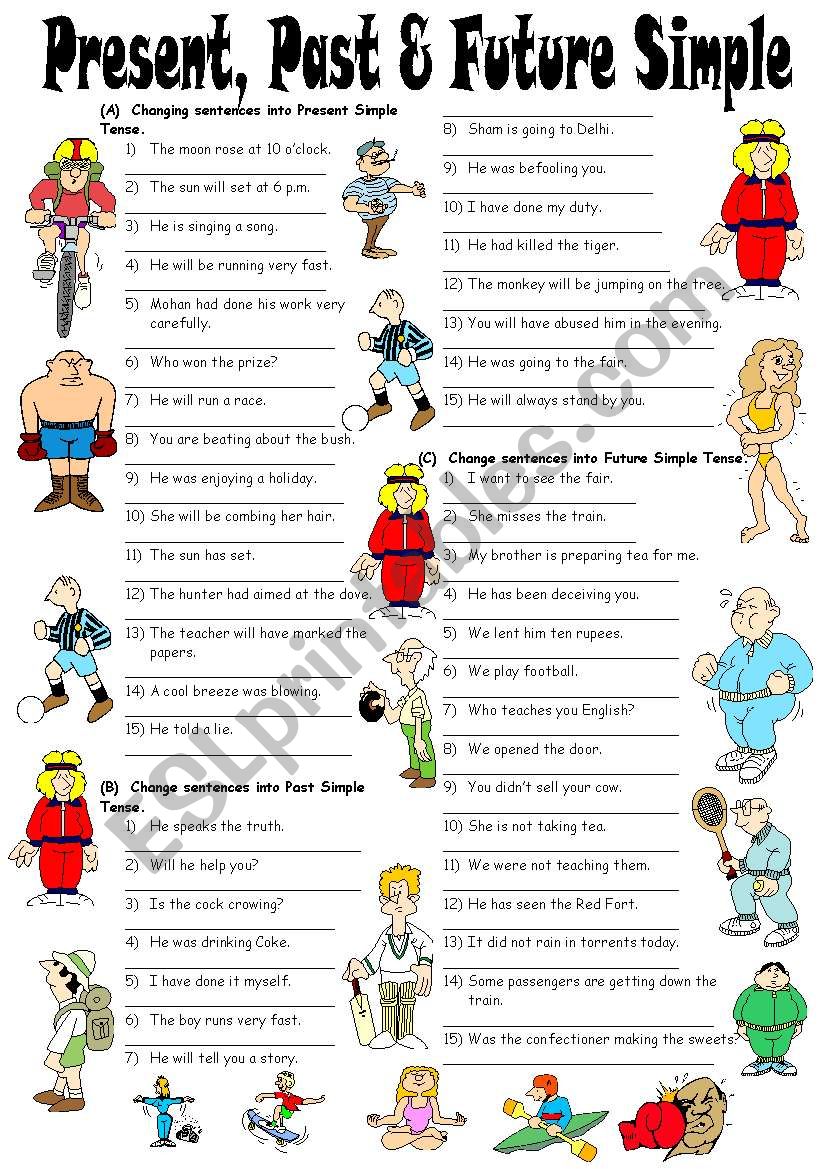
Simple Present Past And Future Tense Exercises Online degrees
Present Simple and Future Simple Exercise 1 Perfect English Grammar Click here to review when we use the present simple (make sure you read number 7) Click here to review when we use the future simple Click here to download this exercise in PDF Present Simple or Future Simple Change the verb into either the present simple or the future simple

Grammar explanation of different future tenses future simple, present
The present simple is used to refer to events in the future which are certain because they are facts, or because there is a clear or fixed schedule or timetable: Her birthday falls on a Friday next year. (a known fact about the future) She has her driving test next week, does she? (a fixed arrangement) The train arrives at 20.12. (a timetable)
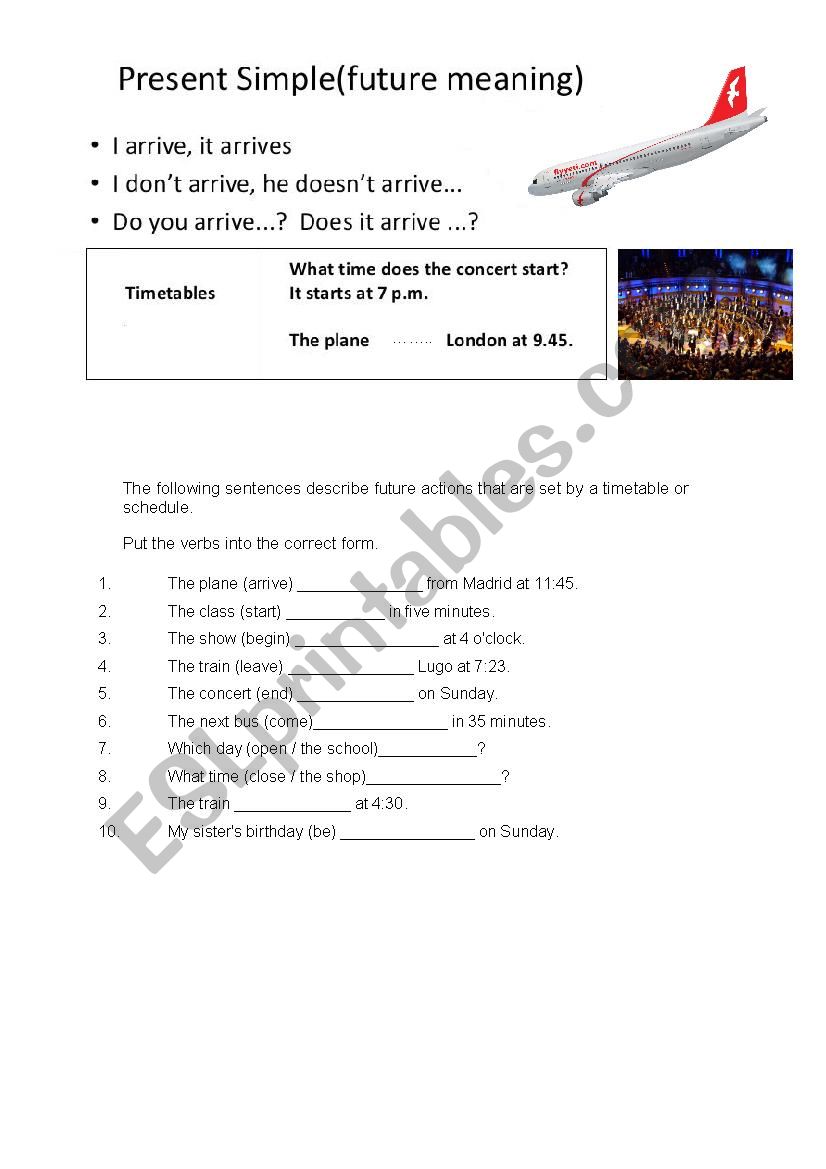
Present simple for future ESL worksheet by lorelay13
Simple present is one of the ways to refer to the future in English. When future events happen according to a public timetable (like trains, flights, cinema, opening hours of an organization, calendar, classes etc.), we use the present simple to talk about the future. It is not our personal schedule, but it is the same for everyone who uses it.

PresentPastFuture Simple Tense worksheet
It is not the most common use of a present tense verb referring to the future (the present continuous is more common), but we do use the present simple to refer to organised future events which have already been arranged. Examples: The office closes at 5 O'clock today. The flight leaves before lunchtime tomorrow. My friend arrives from.

Past Simple Present Simple Future Simple CALAMEO Downloader
There are three main ways to use the present simple as a future tense. Timetables and programmes The most common use is in timetables and programmes. Take a look at these sentences: His plane leaves at 7am tomorrow morning. The play starts at 8pm. Her train gets in at 4.45pm so we have time to have lunch beforehand.
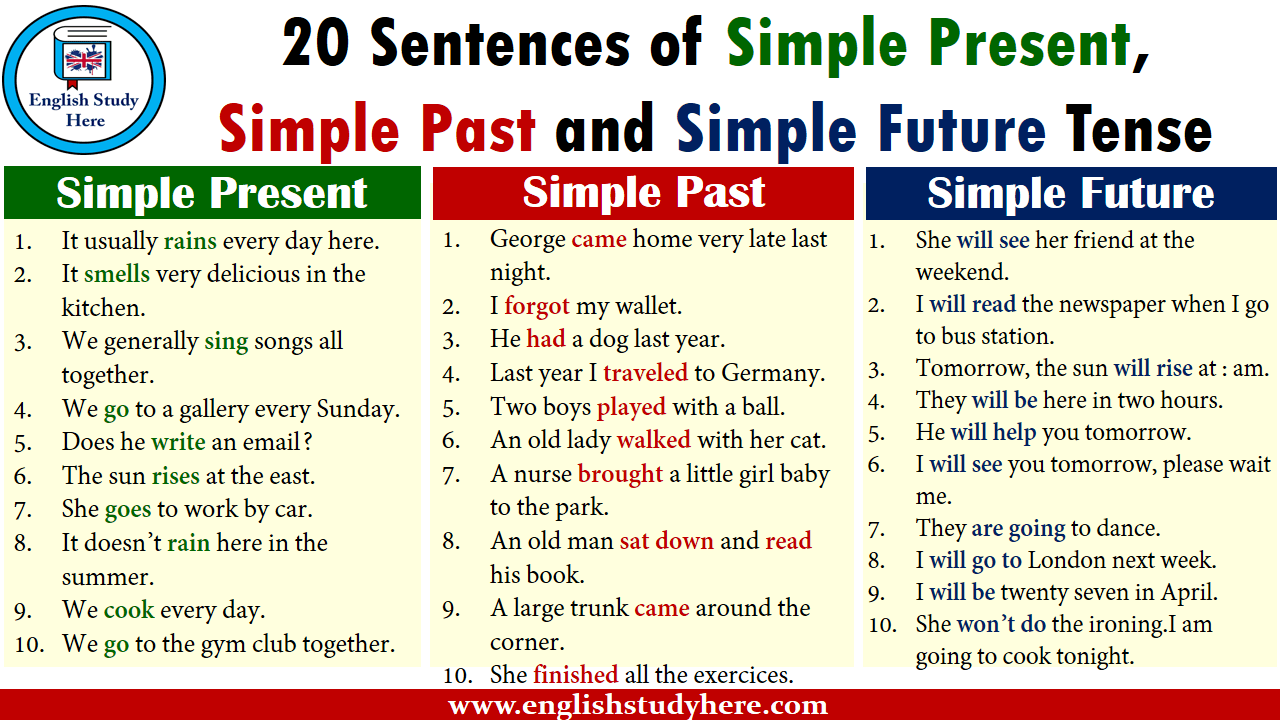
Write ten sentences on Each tense Simple(present, past, and future
English Grammar Verbs Present tense Present simple Present simple Level: beginner The present tense is the base form of the verb: I work in London. But with the third person singular ( she / he / it ), we add an -s: She works in London. Present simple questions Look at these questions: Do you play the piano? Where do you live?
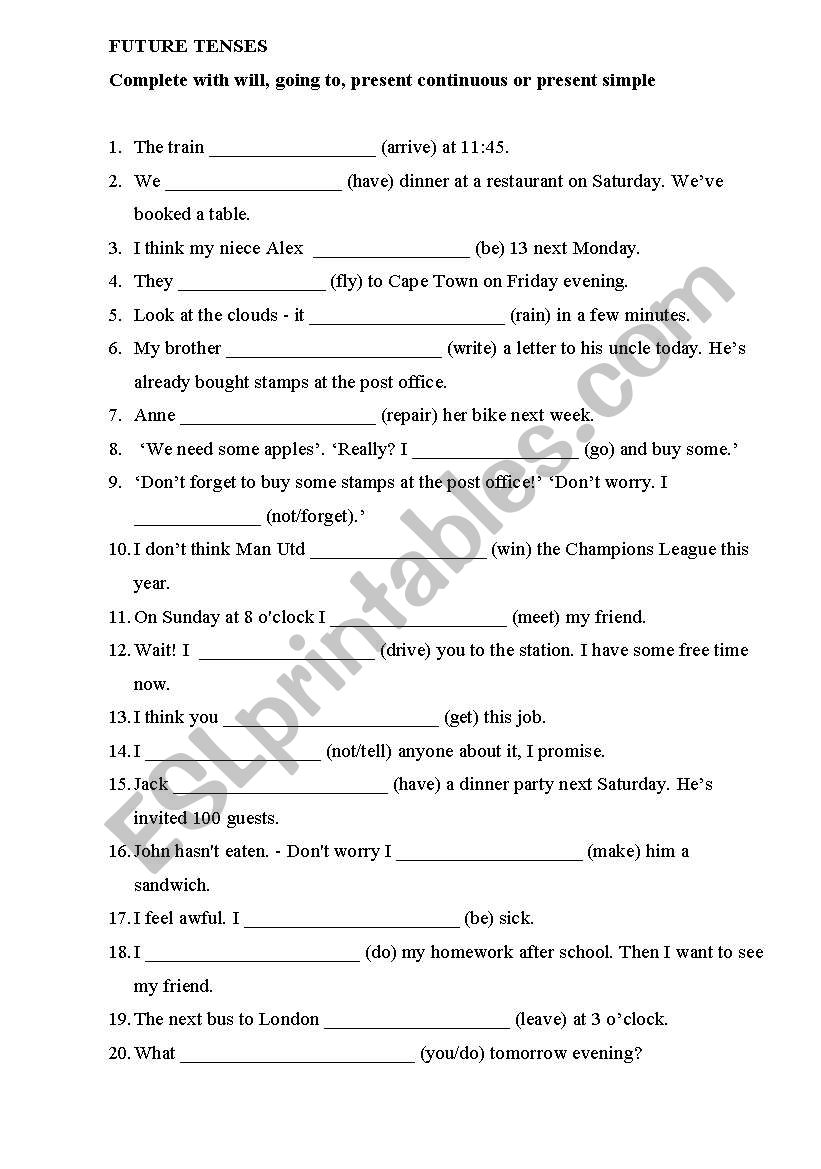
Future tenses will, going to, present continuous or present simple
Present simple for the future When future events happen according to a public timetable (like trains, flights, cinema, opening hours of an organization, calendar, classes etc.), we use the present simple to talk about actions in the future. It is not someone's personal schedule but it is global for everyone who uses it. We often use these verbs:

Simple present, past, and future tenses
fixed event. future. present. simple. When talking about schedules, timetables and itineraries, the present simple tense is used to refer to a future event that is planned and is not likely to change: I have a meeting on the 15th, but I'm free on the following day. What time is your flight?

Pin by Ana Strehovec on Rocío vf Grammar worksheets, Learn english
We use the Present Simple for the Future in order to indicate that a future event is scheduled. Something is "scheduled" when it is on a timetable, written in someone's diary… Some examples would be: Transport: "The train leaves at 10pm" Entertainment: "The film starts at 7pm" Scheduled plans: "I leave for Panama next week"
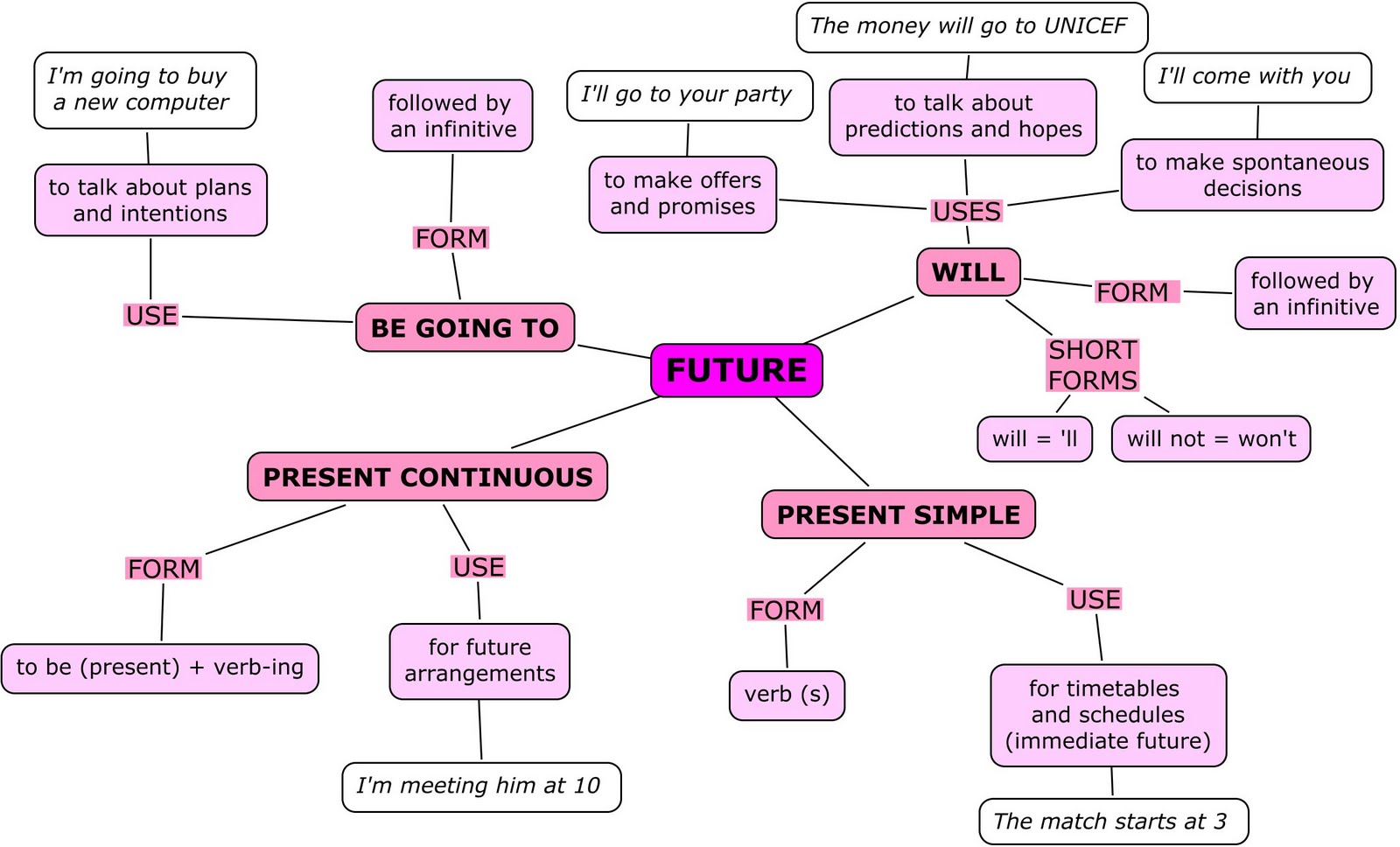
Soraya Moreno's Blog FUTURE FORMS PRESENT SIMPLE, PRESENT CONTINUOUS
Simple present for future events | EF Global Site (English) The simple present is used to make statements about events at a time later than now, when the statements are based on present facts, and when these facts are something fixed like a time-table, schedule, calendar.
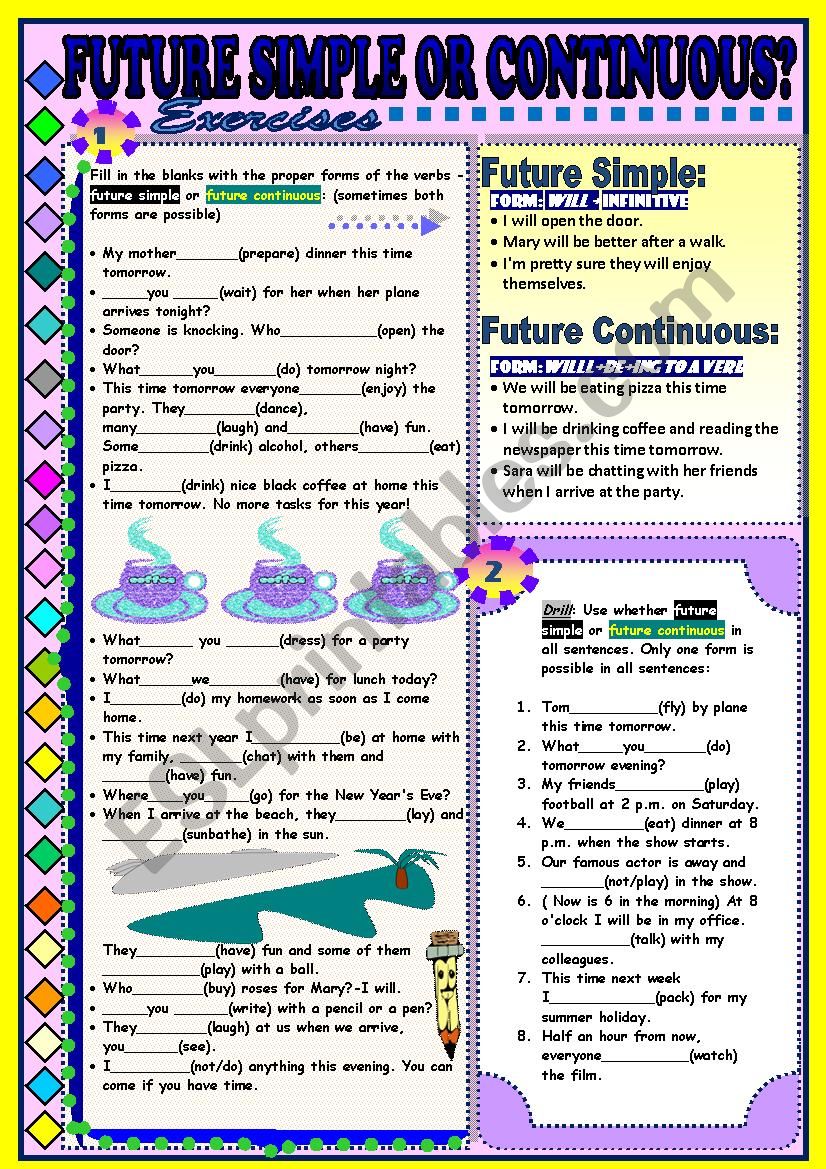
Present simple as a future tense activity
The past, present, and future are the central divisions of time in English. The present represents actions happening now, while the past represents actions that happened earlier, and the future describes actions that will happen later. Simple tense. The simple tense is a grammatical aspect that refers to the normal forms of the past, present.

Simple Future Tense Verbs and tenses
The Present Simple is the tense we use to express ordinary, regular actions in the present. But besides this, we can also talk about the future using the Present Simple. Usually, we use the Present Simple to talk about a fact or a well-known truth: Lions live in Africa. Therefore, we use the Present Simple when we talk about the future.

Simple present for future events English4Today
Present Simple for Future Events In the example I gave, I said the following: "…we fly in about an hour and a half, so at the moment we're just killing time." As flights are on a schedule, we can use the present simple . That is why I said, "we fly…" for a future action. Here are some more examples: "Hurry! The movie starts in 10 minutes!"
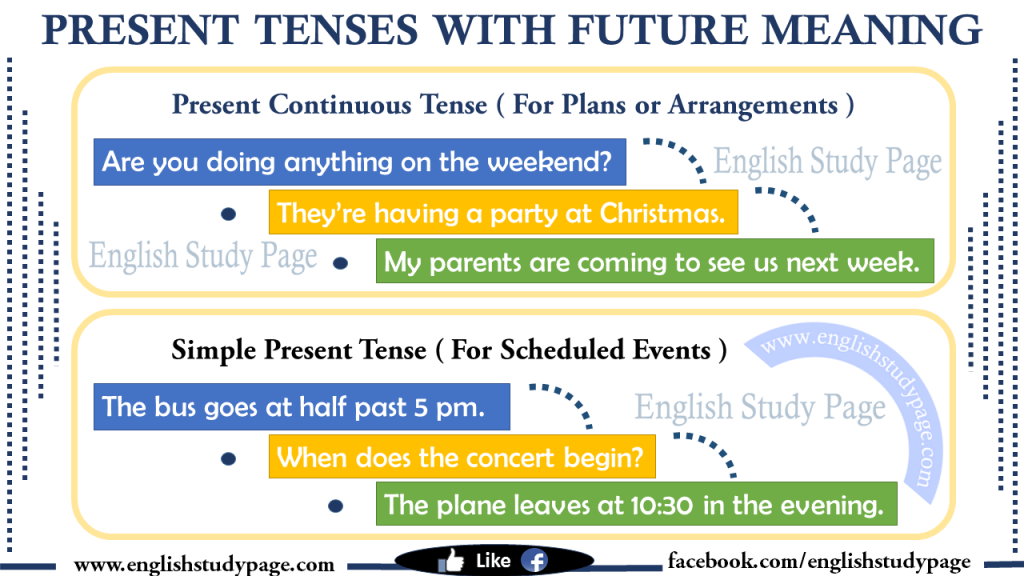
Future Present Tenses Blog
Learn seven different ways of talking about the future including the present continuous, future continuous, future perfect and present simple. Join Dan on a.
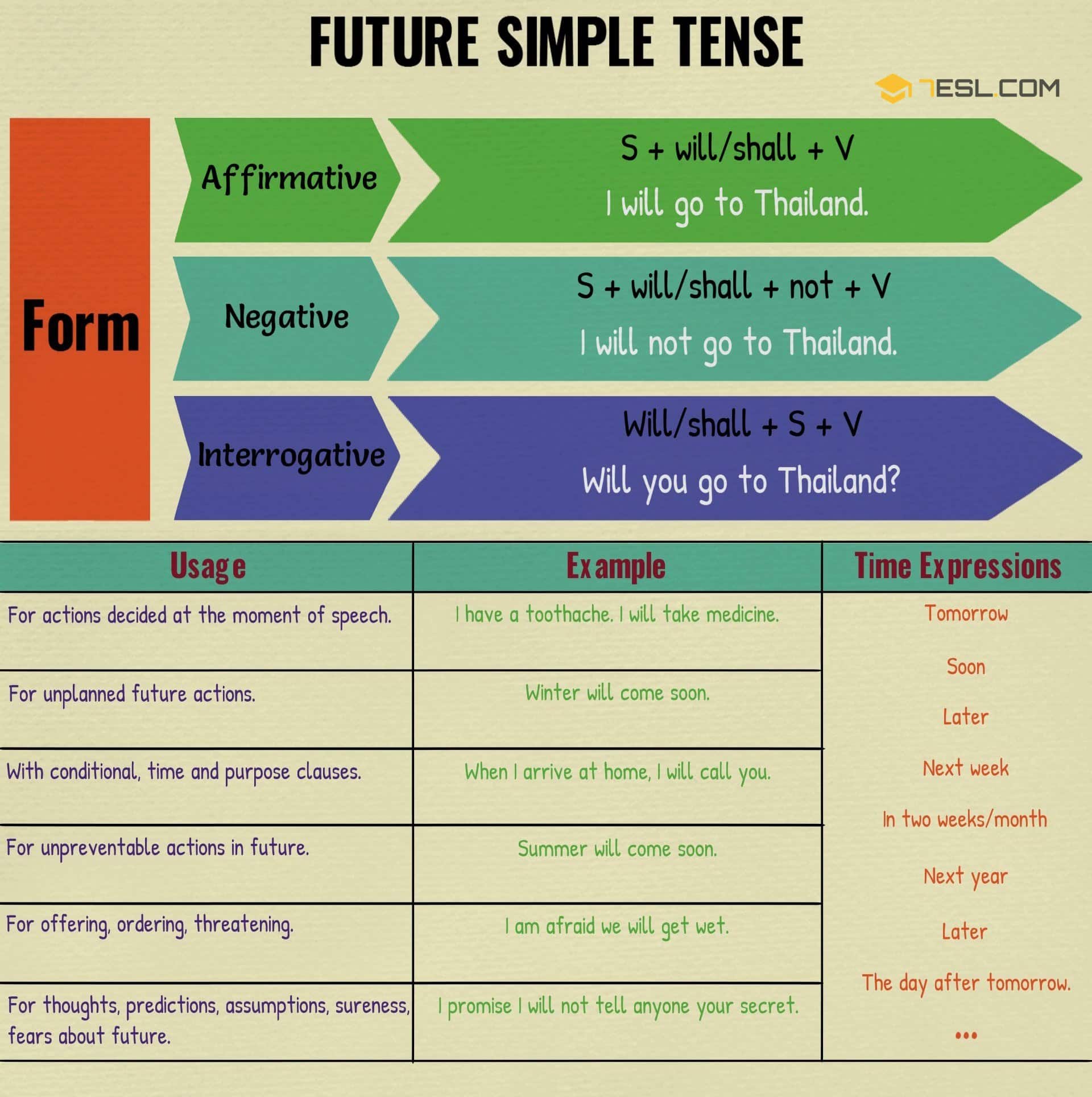
Simple Future Tense Definition, Rules and Useful Examples • 7ESL
Simple Present for Future Events: Function The simple present is used to make statements about events at a time later than now, when the statements are based on present facts, and when these facts are something fixed like a time-table, schedule, calendar. Examples The plane arrives at 18.00 tomorrow. She has a yoga class tomorrow morning.